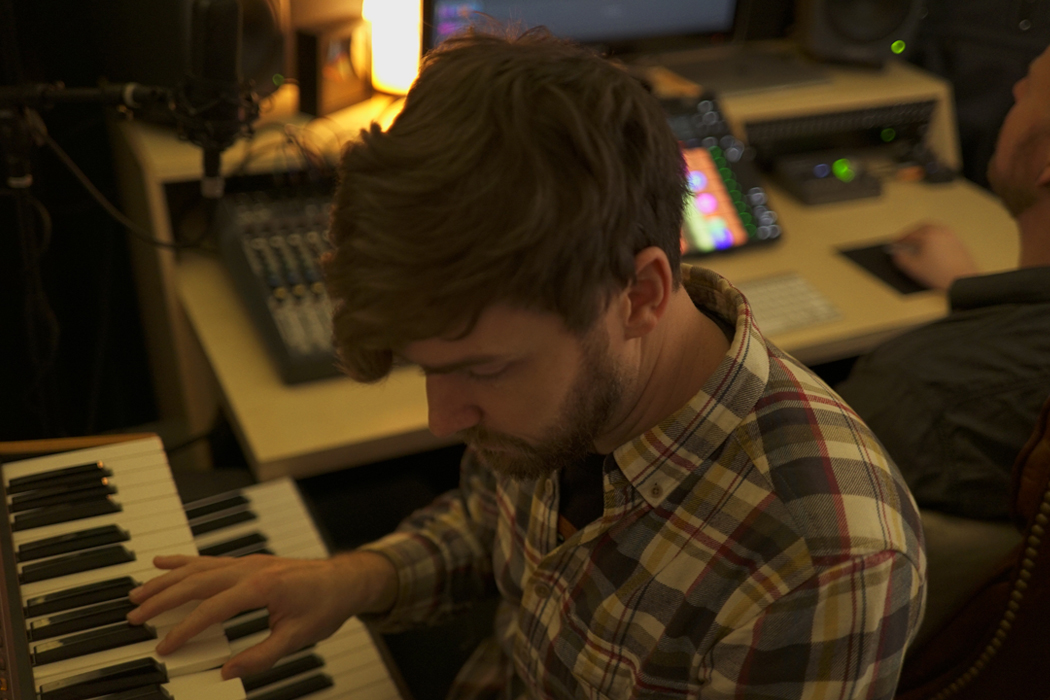+ Learning to mix at home? Preview a lesson in Soundfly’s online course Faders Up: Modern Mix Techniques for free, and subscribe for unlimited access for only $39!
Delay is one of those staple effects. No DAW is without at least one delay plugin, and most mixes utilize this bread-and-butter effect in some way or another to help tie things together.
There’s a good chance you’re already using delay regularly, perhaps to create a repeating effect, make a stereo ping-pong happen, or in any number of other creative applications. There are, in fact, a whole host of useful things you can do with a delay, so we thought we’d go over five fun, creative ways you can use delay in your mix.
1. Create and change rhythms.
One beautiful use of delay is to alter or expand the possibilities of your rhythm tracks. You can take an otherwise boring drum beat and make it swing and sway, play around with the way the percussion sits in the stereo spectum, or just make the snare do a few interesting flims and flams.
Try sending both kick and snare through a tempo delay set at factor one-half (8th notes). This will turn a simple “Boom Bap” into “Boom (boom) Bap (boom bi) Boom (boom boom) Bap (boom bi).” Adjust the wet/dry mix to emphasize or deemphasize the original rhythm and use decay time to adjust how long the new delayed rhythm plays out.
A second idea is to try using a stereo delay that’s locked to your project tempo. Set one side to factor three quarters and the other to one-half. You can use feedback to mess with the rhythm further, and if your delay has a crossfeed setting, you could even automate that to come up at certain times to create variance in the pattern and fills. You could even combine feedback and crossfeed to create crescendos.
Use your imagination, try a bunch of different combinations, and you can create a ton of rhythm variants that stem from the repetitive patterns you’ve already laid down.
2. Use delay to replace reverb.
Reverb is simply a kind of delay. You can set your delay subtly to basically just give your track a reverb effect, and create space without washing out the sound. Here’s an easy trick to add depth and presence to a vocal track.
Send the vocal to a buss and insert a tempo-locked stereo delay. Set one side to a 16th note and the other to a 16th dotted or triplet. Set the feedback to something low like 7% on the left and 9% on the right, so that you get one or two repeats. Bring the buss up until you have what you want. You can use this effect instead of a reverb, or in combination with a one.
It may effect the overall sound of the song in some mixes, but sometimes it reads as appropriately subtle, like something you only notice when it’s gone, or the other elements in your song dip out for a moment.
+ Learn production, composition, songwriting, theory, arranging, mixing, and more — whenever you want and wherever you are. Subscribe for unlimited access!
3. Make a mono track stereo.
If you’ve got a mono track, perhaps a synth or guitar line, and you want to be able to manipulate it in stereo, you can use a delay to do this. Just copy the signal to another track and pan each copy hard left/right. Then insert a delay on one side and set it somewhere between 5 and 20ms. Make sure the wet/dry is set to 100% wet, with no feedback or crossfeed (unless you want to see what happens!).
And if you really want this track to stand out in the mix, use three tracks; with the original in the center. Insert a separate delay on both left and right with a similar setting, say 5 to 20ms on the left, and 10 to 30ms on the right, making sure they’re different. Bring the two sides down or up to taste to create your new stereo track.
4. Create a metallic effect.
If you set your delay to a very fast response, say around 15ms and set feedback to a generous setting, say around 50%, what you’ll get is a very metallic effect, akin to some kind of robot sound. This effect can be enhanced by adding a high pass filter to cut out low frequencies.
Play with the feedback and crossfeed settings to create more metal effect or decrease the delay time even further to inch toward a flange-like sound.
5. Delay the delay!
Finally, there’s no rule against combining delays. Although you do have to worry about muddying up your mix if you’re not careful.
To put some of the previous examples together, I created a simple pattern with kick and snare. Next, I inserted a delay and set the delay time to around 17ms, with a feedback of 40% and a wet/dry mix of 44%. Then I inserted a stereo delay, this one tempo-locked, and set the left side delay time to factor one-half (8th notes) and the left to three quarters. I set the feedback at 26% and the wet/dry mix to 34%.
That was cool enough, but the fun part was automating the crossfeed setting in time with the rhythm. On the metallic delay, bringing the crossfeed to around 50% at the last beat of the measure created a kind of synth accompaniment, and jamming it all the way to 100% created basically a wobble bass, as the low end from the kick modulated, then interacted with the second delay.
Next, I tried automating the crossfeed on the second delay, which created fills and variations in both the drum track and the new pseudo synth. All of this coming out of only one drum patch, with a simple kick and snare pattern.
Putting it into practice
If there’s one thing that comes up over and over in audio, music and mixing, it’s that there are no rules. You can use a delay in anyway you see fit, and it’s a great idea to experiment. Play with settings, break the rules, and find your next crazy, interesting, beautiful sound.
Want to get all of Soundfly’s premium online courses for a low monthly cost?
Subscribe to get unlimited access to all of our course content, an invitation to join our members-only Slack community forum, exclusive perks from partner brands, and massive discounts on personalized mentor sessions for guided learning. Learn what you want, whenever you want, with total freedom.





